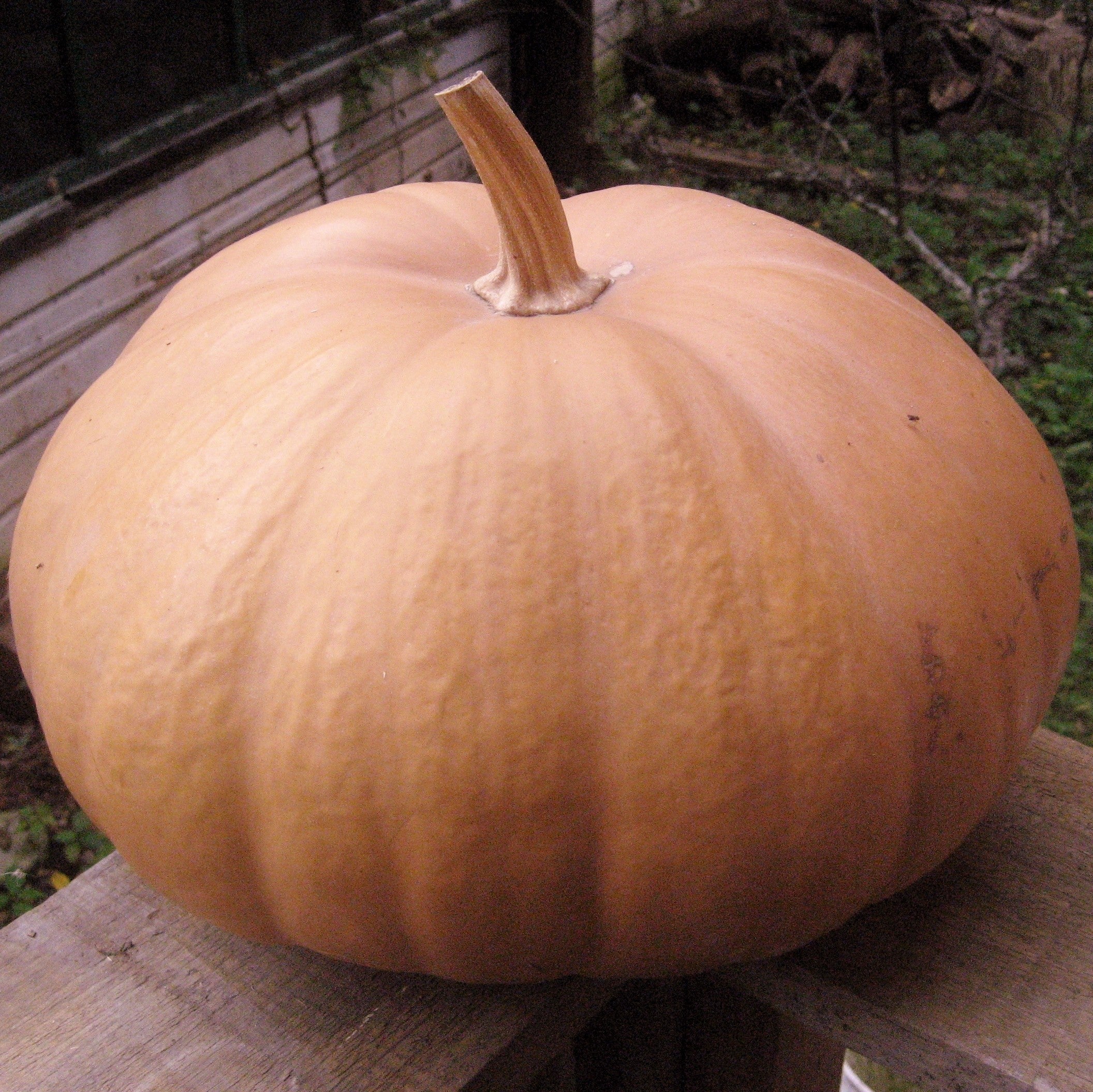 Linked to cheese through appearance only, the Long Island Cheese Pumpkin has been revered for centuries thanks to its smooth flesh and string-less interior, not to mention the high nutrient content. It's one of the oldest squashes domesticated for food, which we think speaks well for its taste and grow-ability.
Linked to cheese through appearance only, the Long Island Cheese Pumpkin has been revered for centuries thanks to its smooth flesh and string-less interior, not to mention the high nutrient content. It's one of the oldest squashes domesticated for food, which we think speaks well for its taste and grow-ability.
In 1807, Long Island Cheese Pumpkins first become available on the commercial market, having gained popularity among cooks on Long Island. It maintained its popularity through the mid-20th century, before it almost disappeared. Ken Ettlinger grew up on Long Island in the 1950s. He says his family would go to a local farm and pick up a cheese pumpkin so his mother could make Thanksgiving pie. In the 1970s, Ken noticed that the pumpkins were becoming a rare find. He didn't want the pies to become a memory only, so he started saving seeds. In 2012, Ken and local farmer Stephanie Gaylor established the Long Island Regional Seed Consortium, and later, with other partners, the Long Island Cheese Pumpkin Project was born. Due to these local seed stewards' efforts, Long Island Cheese Pumpkin, and the delicious pies they make have made a comeback. In fact, Long Island Cheese Pumpkin is now a part of the Slow Food Ark of Taste.
It maintained its popularity through the mid-20th century, before it almost disappeared. Ken Ettlinger grew up on Long Island in the 1950s. He says his family would go to a local farm and pick up a cheese pumpkin so his mother could make Thanksgiving pie. In the 1970s, Ken noticed that the pumpkins were becoming a rare find. He didn't want the pies to become a memory only, so he started saving seeds. In 2012, Ken and local farmer Stephanie Gaylor established the Long Island Regional Seed Consortium, and later, with other partners, the Long Island Cheese Pumpkin Project was born. Due to these local seed stewards' efforts, Long Island Cheese Pumpkin, and the delicious pies they make have made a comeback. In fact, Long Island Cheese Pumpkin is now a part of the Slow Food Ark of Taste.
The revival of this heirloom is now being stewarded largely by the efforts of the Long Island Cheese Pumpkin Project. It's also now an established part of the Kitchen Cultivars project, a partnership between Seedshed and Glynwood, which aims to unite farmers, chefs and regionally produced seed to bring value and awareness back to our regional varieties.

Like an heirloom seed saver, oil painter Todd M. Casey is a collector of antiquities. To tell the story of this heirloom, Casey went the extra mile- actually 90 miles- to create his Long Island Cheese Pumpkin masterpiece. As an artist dedicated to classical oil painting techniques, Todd only paints from life. You can see his intricate process here. The problem in this case was that Todd couldn't find a Long Island Cheese Pumpkin for sale. So he bought a random winter squash and painted it the color of a Cheese Pumpkin to create his initial studies. They looked amazing, but the squash was the wrong shape. Luckily, Ken had a fully intact year-old Cheese Pumpkin sitting on a shelf his kitchen. So for the final work, Todd drove up to the Hudson Valley Seed Co. farm and picked up the pumpkin to take back to his studio. In addition to the pumpkin, Casey also assembled the historic book Cucurbits of New York, where Long Island Cheese Pumpkin is cited as, “one of the oldest varieties cultivated in America,” a vintage map of Long Island, and an antique trunk for storing seed collections.
To tell the story of this heirloom, Casey went the extra mile- actually 90 miles- to create his Long Island Cheese Pumpkin masterpiece. As an artist dedicated to classical oil painting techniques, Todd only paints from life. You can see his intricate process here. The problem in this case was that Todd couldn't find a Long Island Cheese Pumpkin for sale. So he bought a random winter squash and painted it the color of a Cheese Pumpkin to create his initial studies. They looked amazing, but the squash was the wrong shape. Luckily, Ken had a fully intact year-old Cheese Pumpkin sitting on a shelf his kitchen. So for the final work, Todd drove up to the Hudson Valley Seed Co. farm and picked up the pumpkin to take back to his studio. In addition to the pumpkin, Casey also assembled the historic book Cucurbits of New York, where Long Island Cheese Pumpkin is cited as, “one of the oldest varieties cultivated in America,” a vintage map of Long Island, and an antique trunk for storing seed collections.





